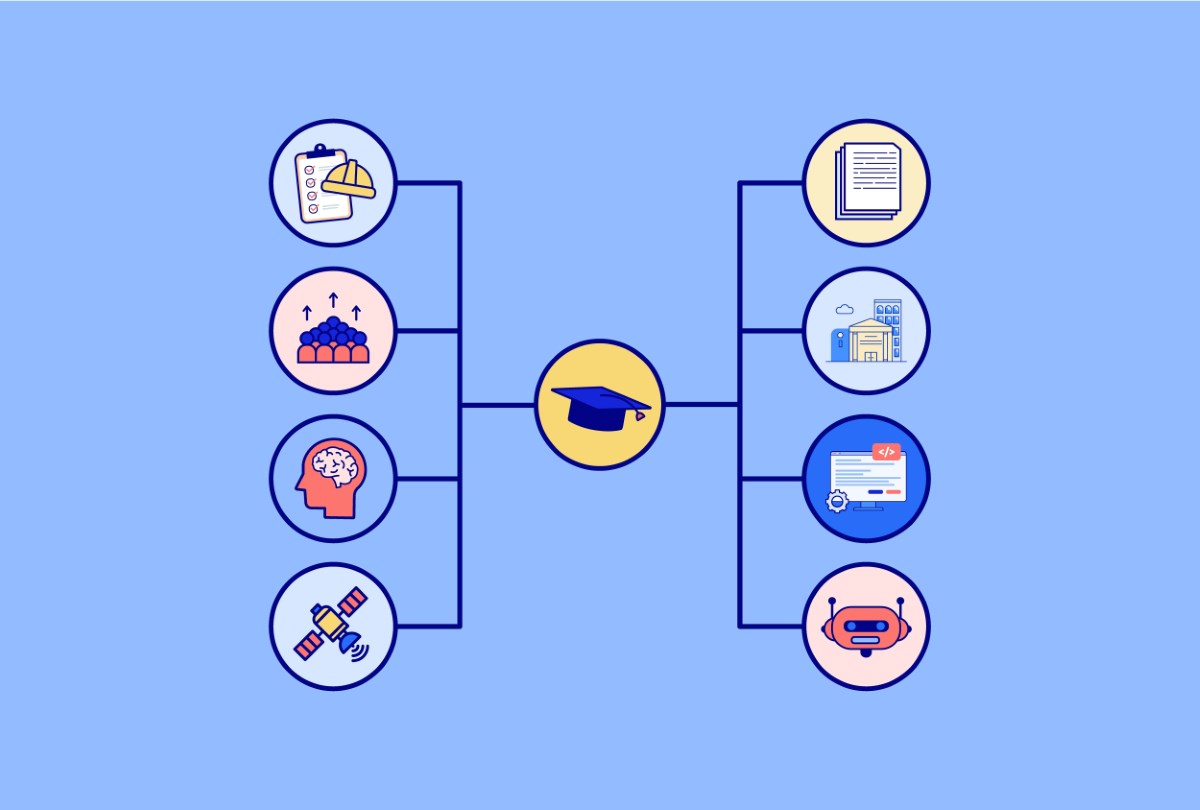STEM-designated fields are areas of study that fall under the four areas of science, technology, engineering, and/or mathematics. Education in STEM-designated fields is crucial to the innovation, growth, and advancements of the economy and industries in the US, and provide students with the skills and discipline needed to become the next generation of innovators. STEM-designated fields include typical areas such as computer science, mechanical engineering, and more but they also include fields such as graphic design and research methods, as designated by the US government.
The United States Department of Homeland Security (DHS) designates over 100 majors or programs to fall under STEM for the purposes of STEM-OPT. In July of 2023, the US government issued an update to the approved list of STEM-designated fields, in which they added eight new fields for international students to consider.
Why are STEM-designated fields important for international students?
Pursuing an education in a STEM-designated field widens the door of opportunities for international students post-study. After graduation, international students can work in the US through OPT (Optional Practical Training) for up to a year. With a bachelor’s degree or higher in a STEM-designated field, international students can apply for an OPT extension, which allows them to work another two years in the US, for a total of three years after graduation. STEM-designated fields are important for international students to consider as they allow you to stay and work in the US longer and increase the career prospects and potential for higher earnings for international students
What are the eight new STEM-designated fields for study?
The last time the US government updated the STEM-designated fields list was in 2021, in which 20 new fields were added. In July of 2023, the US Immigration and Customs Enforcement (ICE) and Department of Homeland Security (DHS) issued a statement announcing that eight new STEM-designated fields had been added to the approved STEM-designated degree program list. These eight new fields are:
| Field of study: | Prepares students to: | Includes instruction in: |
| 1. Landscape Architecture | Independently practice landscape architecture. |
|
| 2. Institutional Research | Perform institutional research at postsecondary institutions. |
|
| 3. Mechatronics, Robotics, and Automation Engineering Technology / Technician | Support the design, development, and operational evaluation of autonomous, computer-controlled systems. |
|
| 4. Composite Materials Technology / Technician | Support the development, manufacture, and use of composite materials in various fields of technology, |
|
| 5. Linguistics and Computer Science | Study the relationship between computer and human language. |
|
| 6. Developmental and Adolescent Psychology | Focus on the stages of psychological growth and development from adolescence to adulthood. |
|
| 7. Geospatial Intelligence | Analyze security and intelligence problems with a geographic perspective through connecting human actions to cultural, political, economic, social, and physical environments. |
|
| 8. Demography and Population Studies | Systematically study population models and phenomena, social structure, and behavior |
|
How to choose a STEM-designated field of study
It can be intimidating to choose a field of study when pursuing a bachelor’s or higher in the US, especially a STEM-designated field, but don’t worry! Students in the US typically have two years to declare a major, so there is time to explore options. Here are a few steps you can take to choose the STEM-designated field of study that will be most fulfilling to you:
- Identify your interests. What are your interests and passions? You might think about the subjects you enjoy learning about the most, or the hobbies you are most passionate about.
- Assess your skills. You also might want to think about the things you excel at. If you are particularly talented in math or research, a field in those areas may be the best fit for you.
- Research career opportunities. Pick a few STEM-designated fields, and look into the career path or job opportunities that could come from a degree in those areas.
- Consider future trends. The demand for STEM professionals in today’s job market is high, and will certainly increase over the next few years. You may consider looking into specific STEM-designated fields or emerging technologies that are projected to grow even faster by the time you graduate.
- Consult with advisors. Utilize your advisors for their advice or expertise on choosing a field of study. They will be a good resource to learning more about STEM-designated fields, or connecting you with career services or alumni professionals.
- Consider your goals. Most importantly, consider your career goals as a student, and look for STEM-designated fields that most closely align with them.
Final thoughts
STEM jobs and talent are in high demand today. Education and careers in STEM offer a wide variety of opportunities, advantages, and options for international students looking to remain in the United States after graduation. International students choosing a STEM-designated field of study should consider their interests, career goals, and skills to find the best fit, and carefully review the approved list of STEM-designated fields for study.

